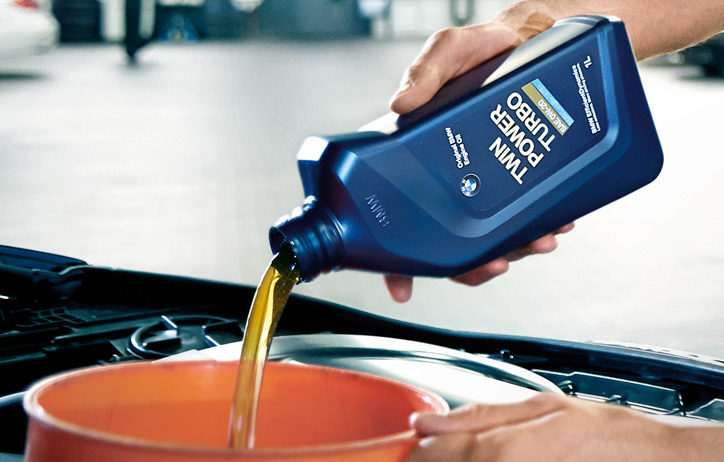I’ve long since lost count of the number of oil changes I’ve performed over the years on the various vehicles that have passed through my possession. The procedure is so engrained within me at this point that I can knock it out quite quickly if necessary, although I typically prefer to be a bit more methodical, and to take my time in the garage. Although many have been driving (and wrenching) much longer than I, after owning roughly a dozen vehicles in as many years, many of the oil changes seem to blend together in my mind. (Whah! Somebody stop me!)
As many other auto writers have noted before, carrying out an oil service is a great way to get in touch with your vehicle. It provides an excellent opportunity to perform an inspection and to check for things like leaks, and I almost always come away from an oil service feeling better about the car I just spent some time underneath, because I know it that much better once the work is done.
A handful of times over the years, I have taken this process a step further, by sending a sample of the drained oil into a lab for analysis.
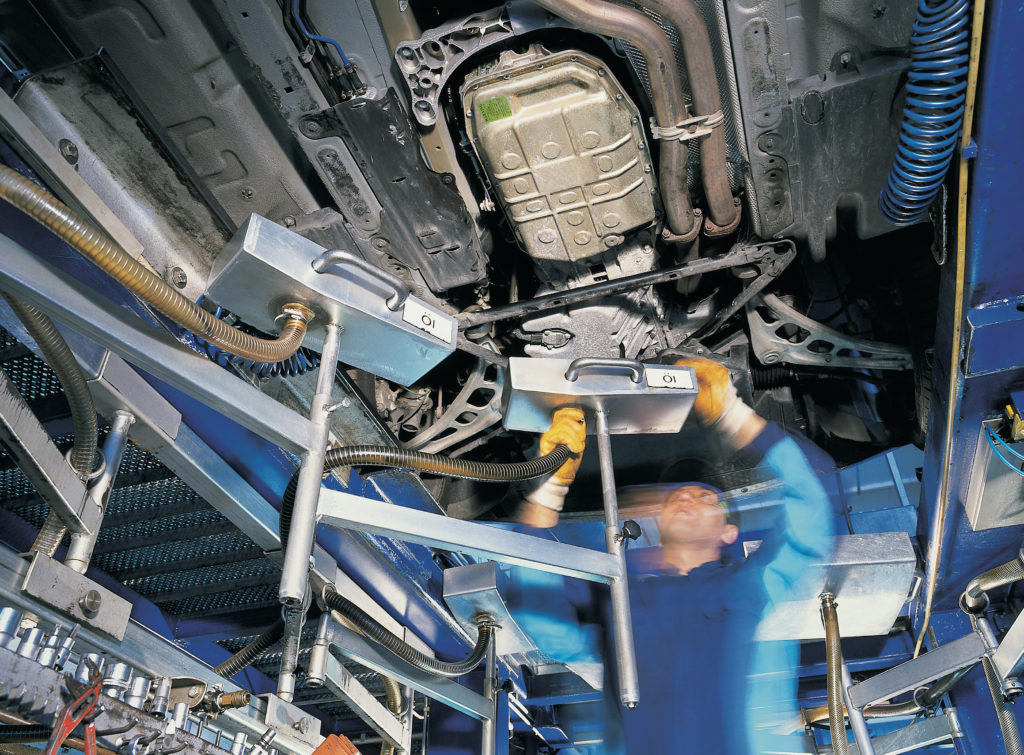
Short of tearing the engine apart ahead of a rebuild or other major service, I think paying for an oil analysis is one of the best ways to get an impression for the true health of an engine’s internals. Sure, a valve adjustment or valve cover service allows a peek at the cams and rockers, and you can stick a borescope into the cylinders as I have done many times, but seeing the actual chemical properties of used oil allows for a much greater perspective.
In many documented cases, oil analysis has allowed vehicle owners to not only diagnose problems with more certainty, but to also gain an impression of what my coming down the line in terms of component failure, in hopes of avoiding a catastrophic engine failure. As I’ll explain below, these reports aren’t fool-proof by any means, but the knowledge they provide has always made me feel more confident about what I’m working with, even if the results weren’t particularly positive.
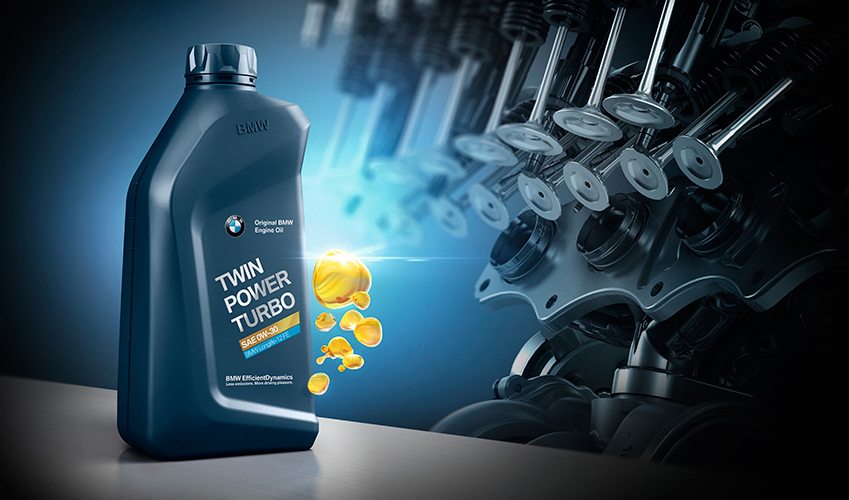
I’ve always used Blackstone Labs to have my used oil analyzed. There are a number of competitors out there, including NAPA, Amsoil, WearCheck, and TestOil, but I have stuck with Blackstone because they seem to see more oil samples than just about anyone else. In the BMW community specifically, for better or for worse, a quick Internet search reveals pages after page of Blackstone reports for various BMW engines. Blackstone has seen enough oil over the years to know the behavior of certain engines quite well, and each report also includes universal averages for the result figures.
As a disclaimer before we get into some actual reports, I’ve used many different oils over the years, and aside from prioritizing quality over cost, have not often favored one over another with any high degree of certainty.
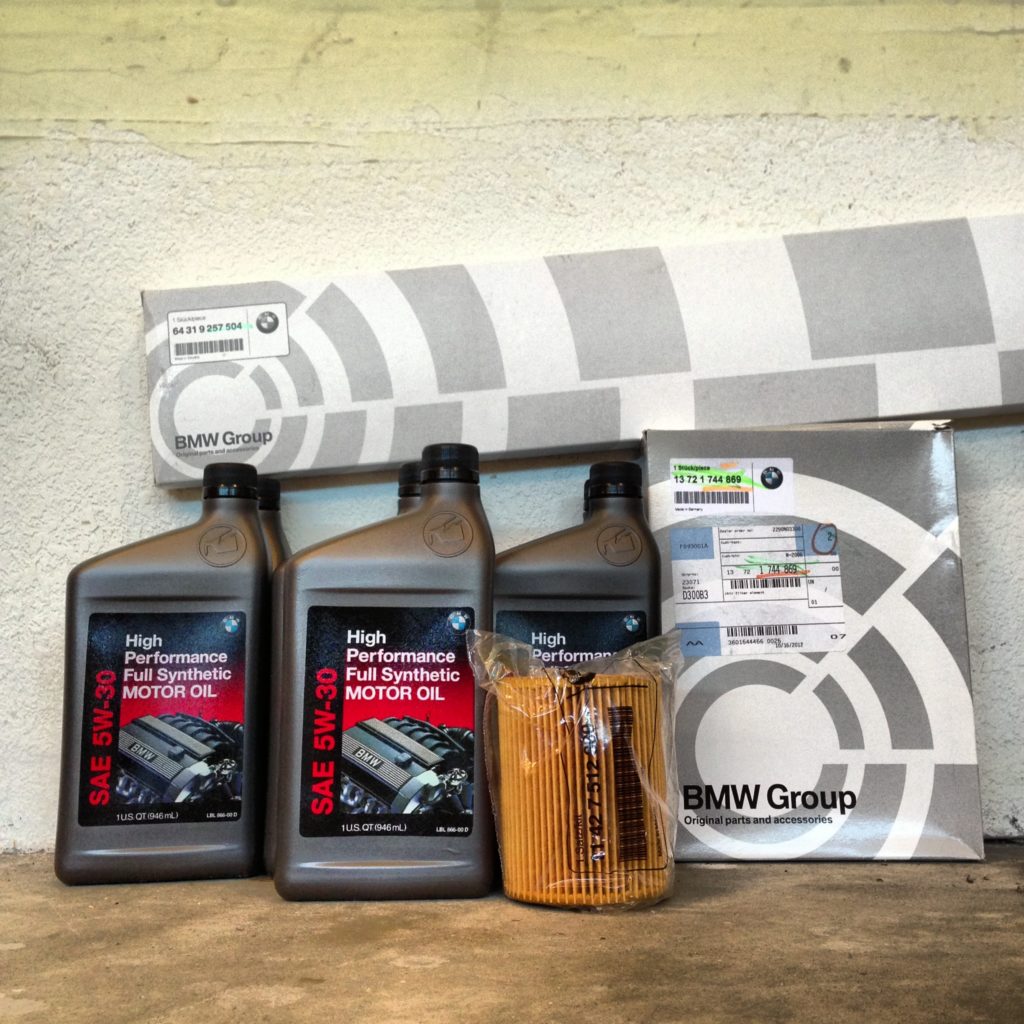
No Longer Available.
This report is from my 1999 Technoviolet M3 coupe. I no longer own this one, but as you can see, the report came back excellent, and the car ran and performed just as well. Unfortunately, even though this report was great, the S52B32 of this M3 was also suffering from a failing head gasket. The report didn’t and would have never caught this specific failure by reporting coolant or water as being present in the oil, because the head gasket of this M3 actually had an external leak, where coolant was dripping down the block near the firewall. The next owner after me replaced the head gasket, which never caused an overheat or prevented the car from being used. It’s since moved on to another person, but as far as I know, the original engine continues to soldier on.

The following report is from my E46 330i. Like my M3, which I owned after this car, the report for the M54B30 came back excellent. I drove this car for another 18,000 miles after the report, with absolutely no problems with the engine except for having to top off the oil every now and then. Interestingly, this was a problem that presented itself after I replaced the thermostat which had been soft-failed in the open position for who knows how long, preventing the engine from reaching full operating temperature in all but the most demanding of conditions. I also ran the oil for 8,600 miles, and the results compared nicely with averages based on oil run for 2,400 fewer miles. Blackstone encouraged a longer oil interval here, which is something I’m not at all afraid of trying on a naturally aspirated engine running high-quality oil. In the turbo era though, I opt for more frequent servicing.
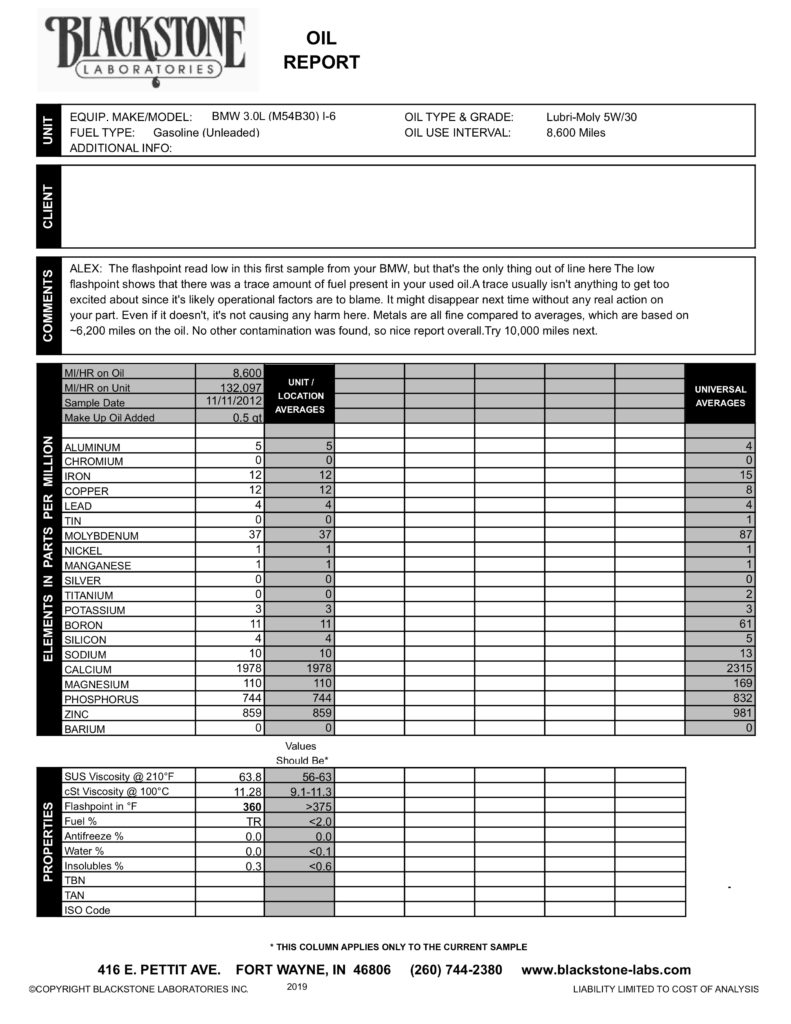
The last report I’ll cover is from a high-mileage E30 that is well past its prime in many ways, but still a blast to drive and perfectly usable. As you can see, the image below contains the results of two reports performed a year apart. The first (on the right) was after the engine was running oil of the incorrect weight, and wear metals from a number of concerning sources like bearings, pistons, and elsewhere are greatly elevated. Because this car was purchased as a project, the alarming report didn’t prompt any corrective action. The car was driven more frequently than at any point in its recent life after this report, albeit with higher-quality Kendall oil of the correct 20W/50 weight in the crankcase. A year later, and this engine is looking much better than it did last time around. Of the four elevated wear metals that were detected last time, only two remain above the universal average threshold, and the other two, copper and lead, are greatly reduced from before—not bad for an un-rebuilt engine speculated to have over 300,000 miles on it, even if it’s one that can’t rev beyond 5,000 rpm.
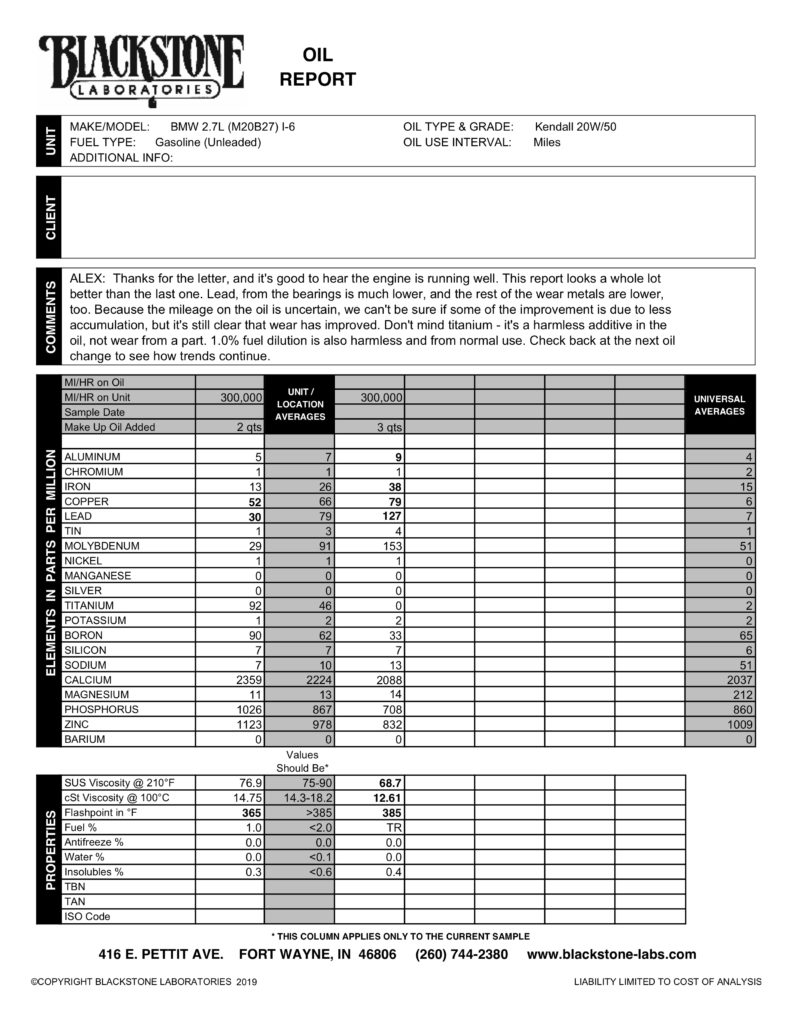
Where do you stand on the utility of used-oil analysis? For the cost, I find the results both fascinating and reassuring, even if they don’t always describe a perfectly healthy engine. Over the years, reports like these have allowed owners of some BMW M cars to pursue preemptive repairs on their engines, like rod-bearing replacement, when lead or other indicating metals read high on a series of reports. I haven’t had any miraculous successes like that, but I do think used-oil analysis is an integral part of getting the full picture of an engine’s condition, and I look forward to my next oil service, just so I can see the detailed results a few weeks later.—Alex Tock
[Photos courtesy Alex Tock, BMW AG.]

